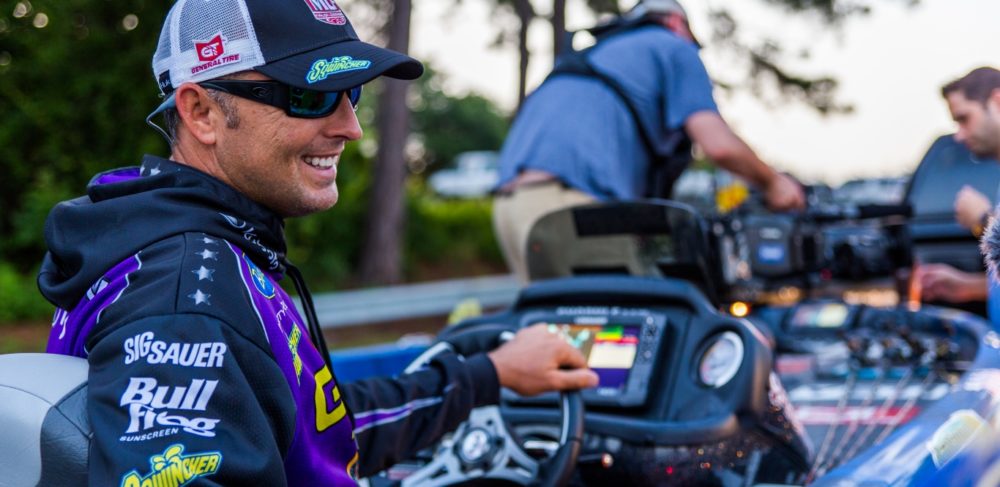Marty Robinson Gives the Local’s Take on Blueback Herring

COLUMBIA, South Carolina – If Marty Robinson was a largemouth or spotted bass living in watersheds in upstate South Carolina, he knows what the main course of his daily diet would probably be: blueback herring.
Robinson, who grew up in Greer, South Carolina and now lives 90 minutes northwest of Columbia in Lyman, is undoubtedly the 24-angler field’s resident expert on blueback herring fisheries: he’s fished the area’s blueback systems (the Pee Dee, Santee, Cooper and Savannah River drainages) since he was a kid, and has racked up 15 Top 50 finishes in B.A.S.S. events held on Southern herring lakes like Murray, Hartwell, Lanier, Smith and Clark’s Hill.
“Blueback herring are different than the forage base in all the other lakes in the country,” Robinson asserts as he prepares for Elimination Round 1 of the 2018 Challenge Select in Columbia. “Bluebacks get a lot bigger than, say, threadfin shad, and fish really love them. They’d rather eat a blueback than anything else. They’re really high in protein, and they support good populations of bass in all these Carolina lakes that have them. If I was a bass, that’s what I’d want to eat, too.”
Bluebacks are different than other baitfish not only because of their size, but because of their nomadic nature. Because they’re descendant from saltwater herring that migrated from the Atlantic Ocean, they’re “extremely fast and extremely mobile”, according to Robinson.
“They come from the ocean, so they’re used to roaming around in open water,” he says. “They do sometimes school in balls like threadfin shad, but they cover a lot more water than threadfin do. Fish tend to move with them, so sometimes during the late spring and summer, fishing can be pretty tough because bass are always on the move along with the bluebacks.”
Blueback best bets
Robinson’s key bait when fish are chasing bluebacks in the late spring/summer is “some kind of topwater … basically something you can cover as much open water as possible.”
“You have to do a lot of bomb casting out into open water, and it’s not easy to predict where they’ll be,” Robinson says. “Fish might hang out close to the side of a point or a brush pile when they’re not schooling on herring, but they tend to relate more to the bait in blueback lakes than to the bottom or to cover. A topwater is a good choice because fish are used to looking up, and busting bait on the surface. That’s one of the biggest issues guys have in fishing these lakes: fish don’t relate to the same thing they do in most lakes.”